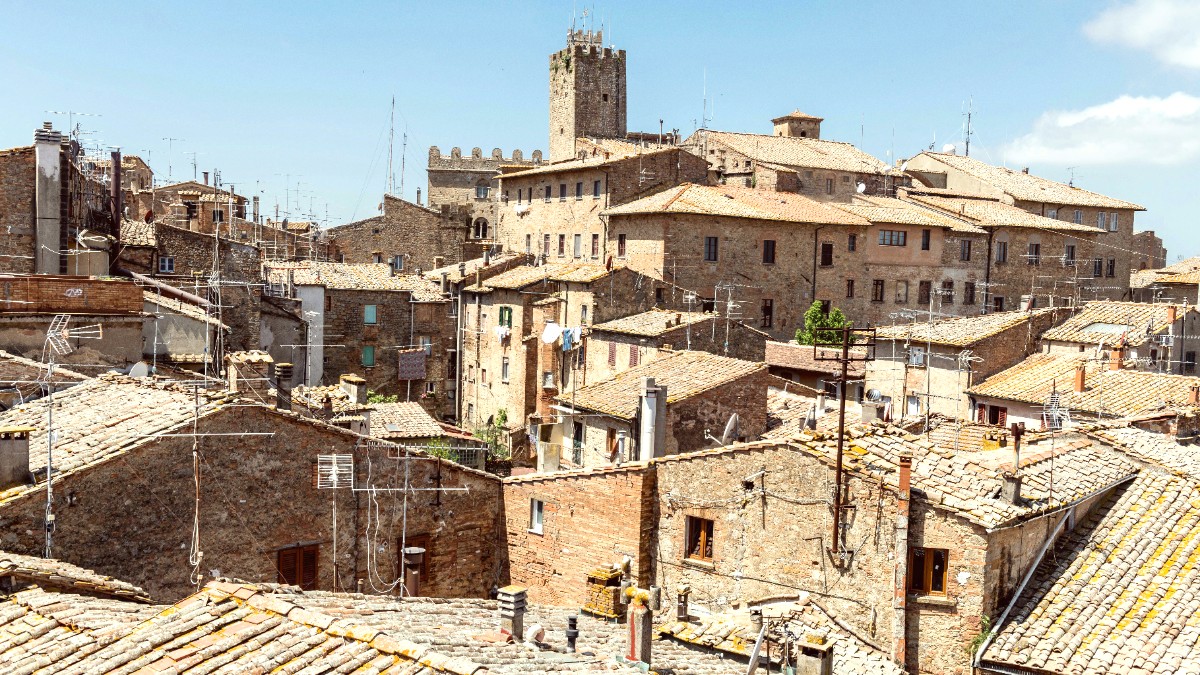
Tuscany, Italy
Public buses serve as the main form of public transport connecting Volterra to nearby towns and train stations. Autolinee Toscane, the main public bus operator in Tuscany, manages bus services to and from Volterra. These buses link Volterra with important nearby towns and the closest train stations, like Pontedera, Cecina, and Colle di Val d'Elsa. Within Volterra, the historic center remains compact and pedestrian-friendly. Walking marks the main way to get around inside the city walls. No internal public transport system exists due to the town's size and terrain.
The main bus stop in Volterra is typically outside Porta a Selci or near the Parco Archeologico (Roman Theatre). Detailed route maps and schedules are available on the Autolinee Toscane website or at local tourist information offices. Always verify schedules before travel, as they change.
Download or print bus schedules. Arrive at bus stops early. A few basic Italian phrases can assist with directions.
Volterra's hilly terrain and cobbled streets challenge travelers with mobility issues. Buses may have steps, and not all are wheelchair accessible.
Use Google Maps for route planning but verify with official Autolinee Toscane schedules. Be prepared for less frequent service on weekends.
Major international companies operate at Pisa and Florence airports. Book in advance for best rates.
Available in larger Tuscan towns, less common in Volterra. Motorcycle license needed for rentals.
No formal bike-sharing exists. Local shops or tour operators offer rentals, including e-bikes.
No tuk-tuks, jeepneys, cable cars, or funiculars in Volterra.
You need a valid driver's license (from an EU/EEA country) or a valid domestic license with an IDP (for non-EU/EEA drivers). A credit card in the main driver's name is necessary for the deposit. The minimum rental age is typically 21-25. Major international companies operate at Pisa and Florence airports. Book well in advance. Consider CDW and theft protection. Check your personal car insurance or credit card benefits. Pick-up at airports is most convenient.
No hop-on-hop-off services operate within Volterra. Many tour companies offer day trips from major Tuscan cities by private coach or minivan.
Not applicable to inland Volterra. The closest major seaport is Livorno for ferry connections.
Volterra does not feature unique transportation methods like funiculars or cable cars. Standard options apply.
Volterra presents considerable challenges for travelers with significant mobility needs. Its steep, cobbled streets and historical infrastructure make navigating difficult for wheelchair users. Some hotels may offer accessible rooms, but public transport and access to attractions can still pose problems. Research specific accommodations and attractions in advance, and contact them directly to inquire about their accessibility features.
Bus services operate with less frequency on weekends and public holidays. Always verify current timetables.
Check ahead
The historic center's compact nature makes walking the preferred method. Wear comfortable shoes.
Explore on foot
A rental car comes as highly recommended for exploring wider Tuscany from Volterra.
Regional travel
Volterra's historic center remains pedestrian-friendly, with many streets and piazzas closed to vehicle traffic. Walking is the ideal way to explore the town's charming streets, Etruscan and Roman ruins, and medieval architecture. Local guides offer historical and cultural walking tours. Self-guided tours are easily done with a map and a guidebook, allowing you to explore at your own pace.
Local guides offer historical and cultural walking tours. Inquire at the Volterra tourist information office for availability.
No specific "no-go" areas exist for pedestrians within Volterra's historic center. Avoid major highways for safety.
Tourist information offices provide maps and assistance for exploring Volterra and its surroundings on foot or by bike.
While Volterra's location on a hill offers stunning views, it makes direct train access impossible. Embrace the regional bus system or the freedom of a rental car to fully experience the town and its beautiful surroundings.